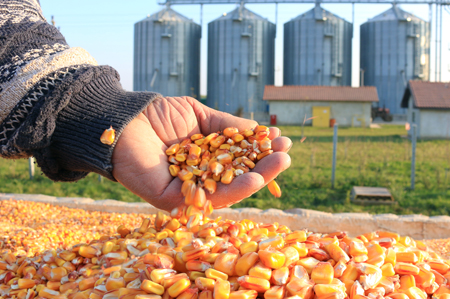 (Reuters) – The U.S. Department of Agriculture will update its U.S. corn and soybean yield estimates on Tuesday at noon EDT (1600 GMT), and analysts are once again banking on declines, though the mild weather in August might not fully support that theory.
(Reuters) – The U.S. Department of Agriculture will update its U.S. corn and soybean yield estimates on Tuesday at noon EDT (1600 GMT), and analysts are once again banking on declines, though the mild weather in August might not fully support that theory.
Last week, Reuters polled 22 industry analysts for their guesses on USDA’s September yield adjustments. On average, corn yield is expected to land at 168.2 bushels per acre (bpa), down from last month’s 169.5 bpa and representing a decline of less than 1 percent.
The market is also anticipating U.S. soybean yield to decline to 48.8 bpa, down from USDA’s August estimate of 49.4 bpa, a reduction of just more than 1 percent.
Prior to the August crop production report, market analysts had seemingly come down with a case of mob mentality, as none of the surveyed analysts had predicted the increase in corn and soybean yields over USDA’s long-term trend yields.
The range in analyst estimates for August was also very narrow, especially for soybeans, but that has expanded for the September report. Last month, analysts bound themselves inside a 1.1-bpa range on their soybean guesses, though heading into Tuesday’s report, the spread is a much-wider 2.7 bpa.
There are also analysts with a more optimistic take on the likely yield changes, something that was not present last month, but they are in the minority. Only three of the 22 analysts called for USDA to increase corn yield on Tuesday, and four of them are looking for a bump in soybean yields.
This means the vast majority of those surveyed believe Tuesday’s yields will come in lower than they did last month, but August’s weather pattern and the trend in crop conditions may suggest that call to be risky.
LOWER YIELDS MAYBE LESS LIKELY
Across the U.S. corn and soybean production belts, August 2017 was the third coolest in the last three decades behind 1992 and 2004. And although there are regional differences, last month’s precipitation total came in just a hair above the long-term average.
The relationship between August weather and USDA’s yield changes in September is most pronounced for soybeans.
Since 1981, all of the years in which USDA trimmed soybean yield by 1 percent or more in September were notably warmer and drier in August than was the case in 2017. The two exceptions are 1987, which was significantly warmer than 2017 in August, and 2004.
The comparison to 2004 is extremely interesting because the August temperatures and precipitation were nearly identical to 2017 – very cool with average rainfall – though USDA lowered soybean yield in September 2004. Ironically, this was the wrong call by a mile as final yield landed 8 percent higher than the August estimate.
Very few September corn yield reductions have taken place when August was cooler than average, but those declines were generally less than 1 percent. And if USDA cuts corn yield by more than half a percent on Tuesday, it will be under the coolest and third wettest August conditions across the Corn Belt.
One other reason corn yields may not fall on Tuesday is the crop condition. The percentage of corn rated in good or excellent condition was steady to slightly up throughout the month of August, and never before has USDA lowered corn yield in September under this scenario.
One could argue that corn conditions tend to undergo a seasonal decline beginning sometime in August as the crop dries down closer to maturity, making the condition comparison unfair or invalid.
But this year’s crop lags in maturity, especially after such a cool August, meaning any seasonal decline in conditions should also be delayed. And if conditions did not decline in August, perhaps the yield expectations should not be lower this month.
As of Sept. 10, some 21 percent of the corn crop was at maturity compared with the five-year average of 31 percent.




